In the last few years, pharmaceutical companies have been looking at nontraditional and creative ways to encourage innovation. There has been a growing movement within the industry toward open innovation, which allows for collaborations between companies, academia, government, and nonprofit organizations for precompetitive research. And there have been efforts experimenting with crowdsourcing to take advantage of the power of the crowd to solve problems.
Now, the industry is taking cues from other industries as a way to spur experimentation and creativity, including sponsoring hackathons, prizes, and challenges.
Hackathons
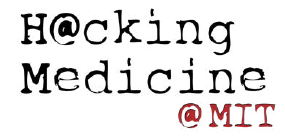 A relatively new way to encourage innovation is the hackathon. Originally used as a way for collaboration in computer programming, it has since expanded into other areas. Hackathons — from the words hack and marathon — are now a way to bring people together to solve problems and bring creativity to the problem-solving process.
A relatively new way to encourage innovation is the hackathon. Originally used as a way for collaboration in computer programming, it has since expanded into other areas. Hackathons — from the words hack and marathon — are now a way to bring people together to solve problems and bring creativity to the problem-solving process.
Last year, MIT held a Hacking Medicine program for leading academic, public, and private institutions to tackle challenges in measuring, analyzing, and judging the effectiveness of digital health products and their combinations with traditional drugs, diagnostics, and health services. MIT has spun out this program into a nonprofit institute to gather healthcare stakeholders together to develop methodologies to determine the value of digital health products. The Hacking Medicine Institute plans to invite pharmaceutical and medical-device companies, policymakers, hospital administrators, doctors, insurance companies, self-insured employers, and company founders from across the spectrum of digital health to compete.
Even pharmaceutical companies are starting to see value from this process. In June 2015, Novartis, in partnership with the COPD Foundation, hosted COPD Crowdshaped, an event that brought together 50 problem-solvers to come up with new ideas to support people living with chronic obstructive pulmonary disease (COPD). COPD is a debilitating and incurable lung condition affecting more than 210 million people around the world.
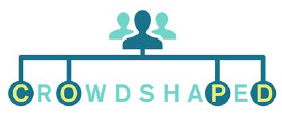 Chaired by world-leading tech innovator and entrepreneur Yossi Vardi, COPD Crowdshaped included TED speakers, digital technologists, and futurists from organizations such as Google, MIT, and Panasonic.
Chaired by world-leading tech innovator and entrepreneur Yossi Vardi, COPD Crowdshaped included TED speakers, digital technologists, and futurists from organizations such as Google, MIT, and Panasonic.
The crowd worked together to crystallize seven potentially life-changing new ideas. These included: an integrated health coaching tool to empower patients to play a greater part in their care; and a monitoring system to find out how someone with COPD can live every day in the best way possible, by predicting what a day or a week will look like in terms of energy levels.
Novartis is now working with partners to bring some of these ideas to life.
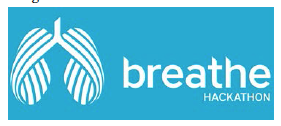 And in September 2015, Novartis held an event called Breathe Hackathon. Over two days, three respiratory hackathon events were held in Boston, London, and Tel Aviv. The events brought together designers, technicians, engineers, patients, physicians, and entrepreneurs to investigate solutions to many of the problems COPD patients face.
And in September 2015, Novartis held an event called Breathe Hackathon. Over two days, three respiratory hackathon events were held in Boston, London, and Tel Aviv. The events brought together designers, technicians, engineers, patients, physicians, and entrepreneurs to investigate solutions to many of the problems COPD patients face.
UCB held an epilepsy hackathon also in June 2015 to develop new digital tools. The event was held simultaneously in the company’s Brussels headquarters and in Atlanta. Digital experts joined forces with epilepsy specialists and patients to build prototype digital tools to support people living with epilepsy. The company challenged participants to focus on areas such as accessing effective support and reliable information, empowering people to talk about their epilepsy, and knowing what questions to ask following diagnosis.
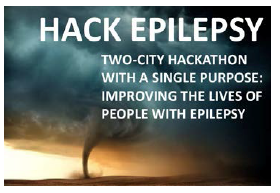 In July 2015, Bayer hosted a collaborative hackathon event at its Berlin headquarters to tackle gaps in the healthcare systems, and produce better outcomes for patients and customers. The aim was to foster conversation between biotech companies and digital health startups to stimulate projects aiming for collaboration between wet lab researchers and software/hardware developers working in healthcare.
In July 2015, Bayer hosted a collaborative hackathon event at its Berlin headquarters to tackle gaps in the healthcare systems, and produce better outcomes for patients and customers. The aim was to foster conversation between biotech companies and digital health startups to stimulate projects aiming for collaboration between wet lab researchers and software/hardware developers working in healthcare.
More recently, Mylan held two hackathons: one in February 2016 in Pittsburgh, Pa., and one in March in Bengaluru, Karnataka. Mylan wanted to provide an opportunity for students and professionals to connect, collaborate and communicate with people at Mylan to develop solutions that address real-world challenges. The company put several challenges to participants: how to overcome obstacles to HIV treatment in emerging markets; how can information collected by Microsoft Band 2.0 be used to paint meaningful health pictures; how to expand on capabilities to enrich telemedicine via a Microsoft Kinect; how one’s voice can change healthcare in the future; and how to better understand the state of access in the world.
Prizes and Challenges
Prizes are among the most effective — and overlooked — tools for incentivizing breakthrough solutions. XPrize estimates that innovation contests return somewhere between 10 and 40 times their initial investment. A study in 2012 of the crowdsourcing platform InnoCentive found that its community of problem solvers succeeded in winning 30% of the prizes offered. These were hundreds of challenges that quite often had stymied the research labs of leading companies and nonprofits. According to InnoCentive, roughly 85% of the 1,700 external-facing challenges that it measured were successful.
 InnoCentive had been spun out of Lilly in 2005, and in 2006 with partner Prize4Life offered a $1 million ALS Biomarker Challenge. The prize was awarded in 2011 to Dr. Seward Rutkove.
InnoCentive had been spun out of Lilly in 2005, and in 2006 with partner Prize4Life offered a $1 million ALS Biomarker Challenge. The prize was awarded in 2011 to Dr. Seward Rutkove.
Prizes and challenges aren’t a new way to incentivize innovation. One of the earliest prizes was offered in 1919 by French hotelier Raymond Orteig, who offered $25,000 for the first nonstop flight between New York and Paris. In total, nine teams spent $400,000 to compete for this prize, but it was Charles Lingbergh who won in a modified single engine aircraft. This single prize changed the way people thought about flight, leading to an increase in people applying for pilots’ licenses and in the number of airline passengers.
Historically, though, prizes have provided incentives for demonstration projects. Twenty years ago, inspired by the Orteig prize, another prize was offered that aimed to raise bar on the challenge, providing competitors with a set of specifications to meet. In 1996 XPrize offered $10 million for a nongovernment organization to launch a reusable spacecraft. The prize was awarded in 2004 to Mojave Aerospace Ventures, marking the dawn of the personal spaceflight revolution. Through this competition, the XPrize established a model that incentivizes innovation and results in 10 times or greater return on the prize and 100 times in follow-on investment and social benefit, according to the organization.
XPrize has awarded four competitions to date. Prizes won include the $10 million Ansari XPrize for private, suborbital space flight; the $10 million Progressive Insurance Automotive XPrize for creating safe, affordable, production-capable vehicles that exceed 100 MPG energy equivalent; the $2 million Northrop Grumman Lunar Lander XChallenge for advanced rocket development; and the $1.4 million Wendy Schmidt Oil Cleanup XChallenge for highly effective ocean oil spill cleanup methods.
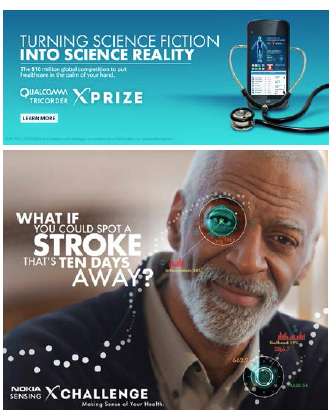 In healthcare, XPrize has several ongoing challenges, including the Qualcomm Tricorder XPrize and the Nokia Sensing XChallenge.
In healthcare, XPrize has several ongoing challenges, including the Qualcomm Tricorder XPrize and the Nokia Sensing XChallenge.
The Qualcomm Tricorder XPrize is a three and a half-year global competition that will award $10 million to teams that develop a consumer-friendly device capable of diagnosing a set of 15 conditions and capturing metrics for health. The goal of the competition is to stimulate innovation and integration of precision diagnostic technologies, intended to make reliable health diagnoses available directly to consumers anytime, anywhere. Ultimately, this tool will measure an individual’s health state through a combination of sensors, imaging technologies, and portable, non-invasive laboratory replacements.
The $2.25 million Nokia Sensing XChallenge consists of two separate and consecutive competitions to advance innovative sensing technologies that capture meaningful data about a consumer’s health and surrounding environment. The advancements in sensing technology resulting from this competition will help lay the foundation for a mobile health revolution that transforms healthcare into a system that is highly personalized, instantly accessible and relevant to the medical needs of each individual.
XPrize also has several potential future projects in healthcare. The Kidney Disease XPrize will challenge teams to overcome decades of stagnation in kidney disease treatment. The winning team will develop a wearable or implantable, tether-free, needle-free, and self-regulating renal replacement therapy. The therapy must improve toxin clearance as well as fluid, electrolyte, and endocrine regulation, and address the challenges of vascular access, bleeding, clotting and bio-fouling.
Another future XPrize for Alzheimer’s has two potential prize concepts focusing on screening and treatment. The winning team will develop the means to effectively and scalably screen patients at risk for Alzheimer’s disease, or the team will demonstrate the ability to improve cognitive function in late stage Alzheimer’s patients.
The Global Health Innovative Technology Fund (GHIT Fund) has launched a Grand Challenges initiative to spur bold solutions for infectious diseases that affect the world’s poor. GHIT Fund is a unique public health partnership that is bringing Japanese know-how and investment to the global fight against infectious diseases.
The GHIT Fund will invest up to ¥100 million (US$1million) for early-stage development of radically new and improved drugs, vaccines, or diagnostics to prevent and treat infectious diseases that are prevalent in developing countries. First launched by the Bill & Melinda Gates Foundation 10 years ago, the Grand Challenges contest was created to foster creative and daring breakthroughs to help solve the world’s most pressing global health and development problems.
Project Data Sphere and Sage Bionetworks, in collaboration with the multi-institutional Dream Challenges Initiative, have launched Prostate Cancer Dream Challenge to improve prediction of survival, disease progression and treatment toxicity in advanced disease.
The challenge marries crowdsourcing with data sharing, paving a new way to tackle key research questions about metastatic castration-resistant prostate cancer (mCRPC), an advanced form of the disease with poor outcomes. The challenge calls upon the cancer research and computational biology community to find solutions to key unanswered clinical research questions about mCRPC and explore innovative research and modeling approaches.
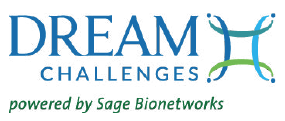 The DREAM Challenges Initiative brings the proven research challenge methodology, with a track record of more than 32 successful projects.
The DREAM Challenges Initiative brings the proven research challenge methodology, with a track record of more than 32 successful projects.
Pharmaceutical companies have also started to offer prizes. GlaxoSmithKline has several efforts under way. One is the Healthcare Innovation Award, a major initiative within a five-year partnership to help save 1 million children’s lives. In February, GSK and Save the Children revealed the winners of their third annual $1 million Healthcare Innovation Award. Four inspiring innovations received awards including: a paperless immunization records system in Vietnam won the largest share of the award, followed by a foil pouch for accurately giving HIV medicines to newborns in Ecuador; an integrated care package for mothers and newborns in Kenya; and a tool for better understanding child deaths in South Africa.
Since 2013, more than a dozen inventive approaches have been recognized, including initiatives involved with developing child-friendly medicines, increasing access to medicines and vaccines, and training health workers.
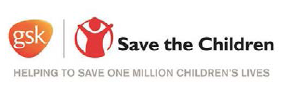 Another GSK effort is the GSK Discovery Fast Track, an opportunity for academic researchers to win a partnership with GSK, helping to turn novel drug discovery concepts into new medicines. Started in 2013 as a way to rapidly uncover the most promising hypotheses in academia for drug discovery research, GSK’s Discovery Fast Track Challenge invites academic scientists from North America and Europe to submit their target or pathway of interest together with a clear therapeutic hypothesis. The submissions are carefully reviewed and up to 30 finalists are selected for evaluation by a group of GSK scientists with expertise in drug development, high throughput screening and the specific biology and/or disease of the submission. Academic scientists selected for advancement then work closely with Molecular Discovery Research Teams to test their hypotheses on potential disease pathways or targets against GSK’s extensive compound library. If early lead compounds are identified that have the desired biological activity and are of sufficient potency and quality to form the starting point for a research program, the winning investigators may be offered an opportunity to participate in the GSK’s Discovery Partnerships with Academia program.
Another GSK effort is the GSK Discovery Fast Track, an opportunity for academic researchers to win a partnership with GSK, helping to turn novel drug discovery concepts into new medicines. Started in 2013 as a way to rapidly uncover the most promising hypotheses in academia for drug discovery research, GSK’s Discovery Fast Track Challenge invites academic scientists from North America and Europe to submit their target or pathway of interest together with a clear therapeutic hypothesis. The submissions are carefully reviewed and up to 30 finalists are selected for evaluation by a group of GSK scientists with expertise in drug development, high throughput screening and the specific biology and/or disease of the submission. Academic scientists selected for advancement then work closely with Molecular Discovery Research Teams to test their hypotheses on potential disease pathways or targets against GSK’s extensive compound library. If early lead compounds are identified that have the desired biological activity and are of sufficient potency and quality to form the starting point for a research program, the winning investigators may be offered an opportunity to participate in the GSK’s Discovery Partnerships with Academia program.
The Discovery Fast Track Challenge has resulted in one such collaboration. In September 2015, GSK announced that it had signed an agreement with Université de Sherbrooke in Quebec, Canada, to develop a new medicine that could potentially lead to new treatment options for patients with iron overload disorders (IOD) such as beta-thalassemia or hereditary hemochromatosis.
Pfizer recently announced the 2nd annual Aspire Cardiovascular competitive grants. Through the Aspire Cardiovascular program, Pfizer is supporting its commitment to PCSK9 research in the global fight against dyslipidemia and atherosclerotic vascular disease. The Aspire Cardiovascular program is designed to support research that brings new insights into and advances the understanding of the role of the PCSK9 protein/gene in health and disease.
The intent of the 2016 Aspire Cardiovascular program is to fund grants of up to US $200,000 from a total fund of $2 million. (PV)


















